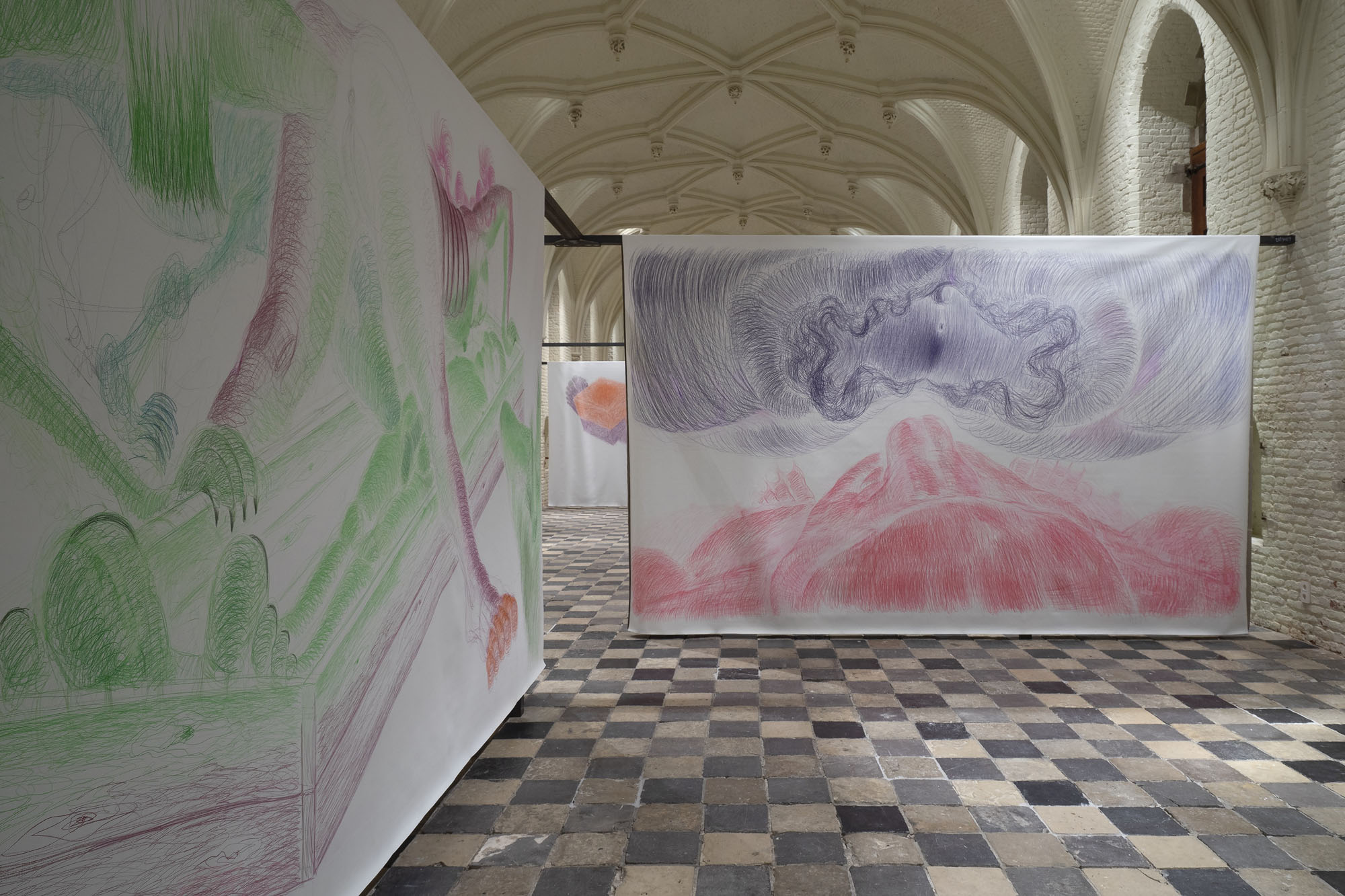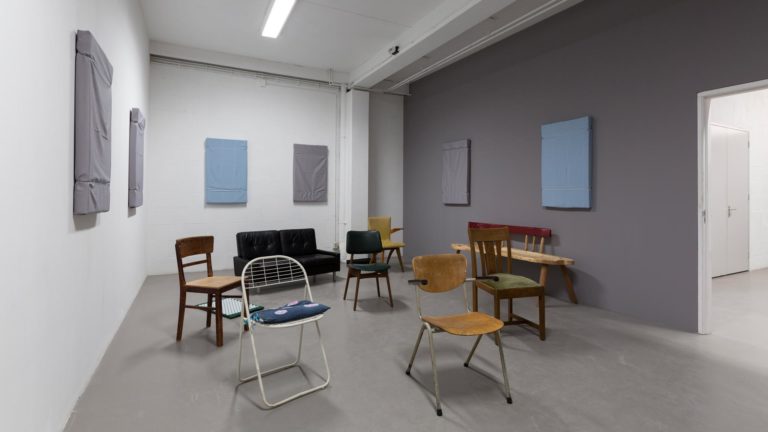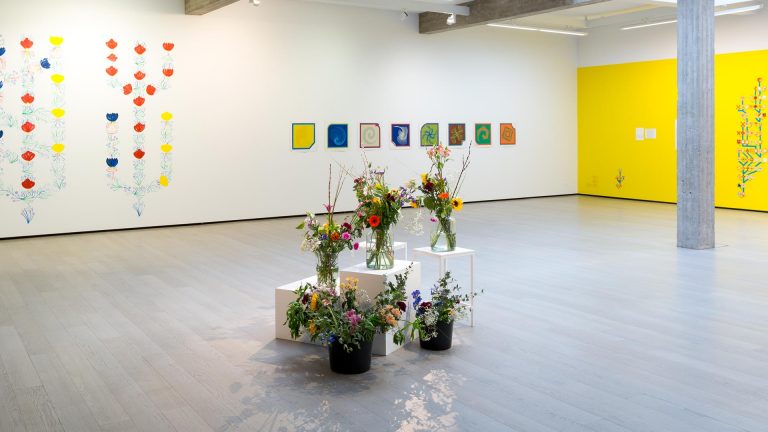Artist: Pieter Slagboom
Exhibition title: As Long As The Potatoes Grow (Vleeshal Art Prize)
Curated by: Julia Geerlings
Venue: Vleeshal, Middelburg, The Netherlands
Date: September 29 – December 15, 2019
Photography: all images copyright and courtesy of the artist and Vleeshal
Once every five years, Vleeshal awards the Vleeshal Art Prize to a promising artist from Middelburg (NL) to encourage the development of the artist’s work. Vleeshal appoints an external curator to select the winner and curate the accompanying exhibition. This time curator and critic Julia Geerlings has been invited. She chose Pieter Slagboom as the winner of the 2018 Vleeshal Art Prize. The exhibition at Vleeshal is the result of an ongoing dialogue between the artist and the curator.
The work of Pieter Slagboom is a poetic analysis of contemporary society. At the same time, his pencil drawings visualize his inner world. They are replete with personal symbols and refer to life’s major themes: birth, death, religion, and sexuality. His idiosyncratic and distinctive style of using curling and shaded pencil lines in a variety of bright colors, portrays confronting and mysterious scenes.
For the exhibition “As Long As The Potatoes Grow” at Vleeshal, Slagboom developed a brand new body of work, consisting of ten monumental drawings on linen, set in a steel construction designed by the artist. This installation is a key project in Slagboom’s development, marking a coming together of scale and the revelation of his drawings as a spatial process. In recent years, his pencil drawings have been getting bigger and bigger and Vleeshal’s monumental space offers Slagboom the opportunity to create even larger drawings.
Scale and format are not mere formal aspects of his work, but also relate to the content. The viewer is led along a labyrinthian route past ten drawings which are suspended dynamically in the Vleeshal. At one moment you, the observer, are standing up close to a drawing, and at another moment there is room to observe a drawing as a panoramic landscape. The further you advance through the space, the more distinct both form and content become. Slagboom constructs his images in gentle, bright colors that take on a spatial effect on the linen canvas due to the layered, wavy or curly pencil lines. The softness of the pencil and the brightness of the colors contrast starkly with the explicit scenes, which gradually take shape.
This slow revelation gives the observer time to process the layered structure of the motives: large foot soles, a female figure bent over a male figure in a casket, a clitoris penetrating a penis, a female figure urinating on a face, mating rats, sniffing dogs. The images are provocative, causing the viewer to instinctively turn away. But whoever keeps looking, also sees an inner world of absurd rituals and personal symbols to do with death, violence, and sexuality—not readily interpretable.
There are many antitheses in the work, both in terms of form and themes: the olfactory world of dogs versus the visual world of humans, civilization versus instinct, death versus life, organic versus geometric, man versus woman. A recurring theme is the individual in conflict, trapped in between cultural and social norms on the one hand and biologically driven behavior on the other. In particular, the coercion that religion and culture exert on the body and the intellect. The French writer and philosopher Georges Bataille shares Slagboom’s fascination with the interplay between eroticism, violence, death, and faith. “Two things are inevitable,” writes Bataille, “we can’t avoid our mortality and we can’t help transgressing boundaries. Dying and transgressing boundaries are essentially the same thing.”
Pieter Slagboom (1956, NL) has previously had exhibitions at Spaceburo Antwerp, Bytheway Projects Amsterdam, Stedelijk Museum Schiedam, Albada Jelgersma Gallery, Amsterdam (group show), and Krammig & Pepper Contemporary, Berlin. His drawing projects “Parma Violet” (2010) and “Salt” (2017) were published by Revolver Publishing in Berlin.
Julia Geerlings (1985, NL) is curator, writer and co-director of A Tale of a Tub in Rotterdam. She has organized exhibitions and performances for venues including de Oude Kerk in Amsterdam, Le Moinsun in Paris, Kunstfort bij Vijfhuizen, Thkio Ppalies in Nicosia, and Kunsthuis SYB in Beesterzwaag. She teaches at HKU, Utrecht, is a consultant for AFK, Amsterdam and CBK Rotterdam. Next year she will be curator-in-residence at Cité des Arts in Paris.
This exhibition is supported by the Mondriaan Fund, the City of Middelburg and Stichting Stokroos.






























